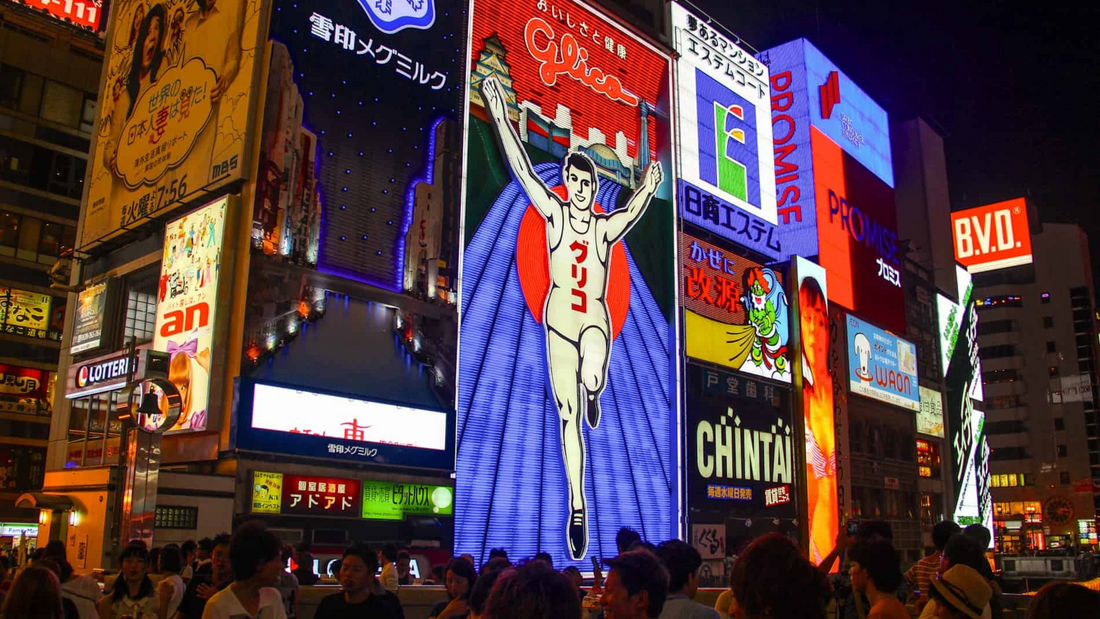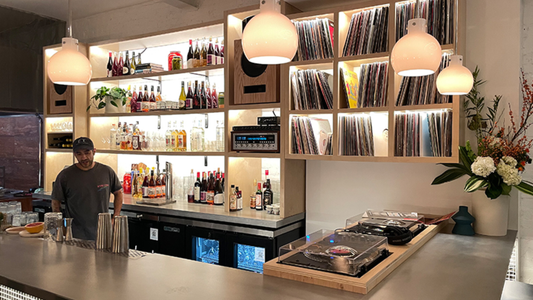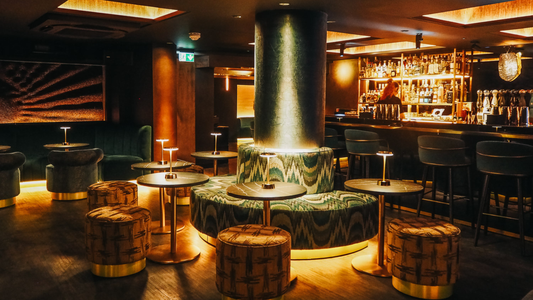
Osaka: Vinyl on the Backstreets, Silence in the Glow
By Rafi Mercer
Osaka is Tokyo’s sibling, but it listens with another accent. Where Tokyo leans austere, ritualised, defined by the precision of the kissa tradition, Osaka wears its sound with more grit, more humour, more glow. This is a city that has always thrived in the margins — in backstreet food stalls, in comedy clubs, in small bars tucked beneath neon. Its listening culture reflects that. Records here are still treated with reverence, silence is still held, but the atmosphere is softer, warmer, touched with the easy confidence of Kansai.
To walk Osaka at night is to see music written in light. Neon pours over Dotonbori, reflections bouncing on the canal, voices layering into a restless hum. Yet take a turn down a narrow street in Namba or Umeda and you might find another rhythm — a door marked only by a sliver of wood, a room no bigger than a living room, shelves stacked with vinyl, a turntable set carefully, speakers glowing. Inside, the chatter dims, the stylus drops, and suddenly the chaos outside is replaced by fidelity. In Osaka, listening bars are refuges, but not ascetic ones. They are backstreet sanctuaries where music and conversation coexist, where seriousness is balanced with Kansai ease.
Compared with Tokyo, Osaka’s listening spaces feel less doctrinal. In the capital, the silence can be absolute, an enforced hush that frames every note. In Osaka, silence is softer. People talk, but lower their voices. They laugh, but lean back into the music. It’s not about perfect discipline, it’s about balance — respecting the record while still carrying the city’s character. Where Seoul reimagines listening bars as futurist sanctuaries, Osaka treats them as familiar, woven naturally into nightlife. And like Berlin, it has grit — sound carried not only in fidelity but in atmosphere, imperfect, human, alive.
Vinyl has always been central to Osaka’s listening life. Collectors here prize Japanese pressings as much as rare imports. Shops in Amerika-mura stock everything from bebop to techno, while tiny basement stores specialise in Blue Note and Impulse reissues. The Japanese attention to pressing quality means that even a Coltrane album familiar elsewhere can sound startling here. To put on Kind of Blue, Miles Davis’s eternal manifesto, is to hear new breath, new resonance. It remains an anchor in bars across the world — part of our own listening bar albums shelf — and in Osaka it feels at once foreign and local, global yet owned.
The listening repertoire in Osaka reflects the city’s spirit: eclectic, generous, a little unpredictable. A night might begin with Bill Evans, shift into Brazilian bossa, then veer into ambient electronics. It’s less curated rigidity than open conversation, less sermon than improvisation. And that, perhaps, is Osaka’s strength: it treats listening as dialogue rather than doctrine.
Drinks here matter too, though they lean local. Whisky is poured with reverence, echoing the ritual we’ve explored in whisky in the listening bar, but sake and shochu often sit beside it. The act is always slow: a glass raised, a sip taken, the record continuing. Rituals overlap, one slowing the body, the other slowing the ear.
What fascinates me is how silence feels communal here. In The Logic of Listening, I wrote about how listening is defined by less rather than more. Osaka proves that point in its own way. Silence is not absolute but relative; it is negotiated within the room. People give space to the record, but they do not abandon their voices entirely. The result is a culture of ease, where respect is shown not by suppression but by balance. It feels less strict than Tokyo, but no less sincere.
Step back into the night afterwards and the contrast heightens. Outside, the city glows with comedy clubs, takoyaki stalls, neon arches. Inside, you’ve just heard a record in full, every note framed, every silence acknowledged. The two worlds collide: noise and stillness, grit and fidelity. And you realise that this is Osaka’s gift to the listening culture. It reminds us that discipline and joy are not opposites, that silence can glow as brightly as neon when framed with care.
Osaka belongs in the Atlas because it proves that listening culture is not one-size-fits-all. Where Tokyo demands austerity, Osaka offers warmth. Where Seoul offers futurism, Osaka offers familiarity. Where Berlin insists on minimalism, Osaka insists on balance. Together, they map not uniformity but variety, proof that listening is a global instinct shaped by local accent.
To listen in Osaka is to hear vinyl on the backstreets, silence glowing under neon, fidelity carried with ease. It is another chapter in the global story of sound — one that hums with grit, laughter, and devotion.
Rafi Mercer writes about the spaces where music matters. For more stories from Tracks & Tales, subscribe, or click here to read more.







